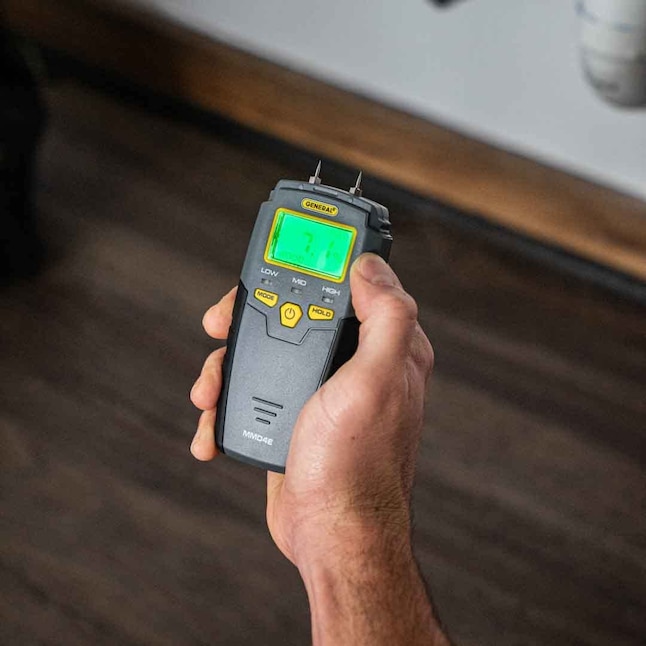The Science Behind Moisture Meters: How They Work and Why They're Important
The Science Behind Moisture Meters: How They Work and Why They're Important
Blog Article
The Ultimate Guide to Dampness Meters: A Comprehensive Introduction and Exactly How They Can Save You Money
Moisture meters serve as indispensable tools in spotting and checking moisture content in products, assisting in avoiding expensive problems and ensuring the high quality of items. Understanding the nuances of various types of wetness meters, their applications, and the potential cost-saving benefits they use can be a game-changer for professionals and companies alike.
Kinds Of Moisture Meters
One common kind is the pin-type dampness meter, which gauges the electric resistance in between 2 pins placed into a material. Pinless wetness meters, on the other hand, use electromagnetic sensor plates to scan a bigger location without creating damage to the material's surface area.

Infrared moisture meters determine the thermal residential or commercial properties of a product to determine its wetness web content non-invasively, making them useful for applications where pin or pinless meters might not be suitable. Comprehending the various types of dampness meters available can aid industries pick the most ideal device for their particular dampness dimension needs.

Benefits of Making Use Of Wetness Meters
Dampness meters supply important advantages in properly monitoring and assessing dampness degrees in diverse materials and settings. One of the key advantages of using moisture meters is the avoidance of prospective damage caused by excess dampness.
Furthermore, making use of dampness meters can cause enhanced energy performance. By recognizing locations with high wetness levels, such as leaks or poor insulation, adjustments can be made to improve energy preservation and lower energy expenses. In agricultural settings, moisture meters play a vital duty in enhancing plant returns by enabling farmers to keep an eye on soil dampness levels and make educated irrigation choices. In general, the benefits of making use of moisture meters extend across different industries, supplying affordable remedies and promoting far better quality assurance techniques.
Exactly How to Pick the Right Wetness Meter
Choosing the ideal moisture meter involves thinking about essential elements such as product compatibility, dimension array, and calibration precision. When choosing a dampness meter, it's necessary to make sure that the meter appropriates for the specific product you will certainly be screening. Different materials have varying electrical homes that can influence dampness analyses, so picking a meter designed for your material is essential for precise results. Furthermore, think about the dimension variety of the dampness meter. Ensure that the meter can spot moisture levels within the range required for your applications. Calibration accuracy is another crucial element to remember. Choose a wetness meter with trusted calibration to ensure constant and exact analyses. Some meters might call for routine calibration adjustments, so understanding the calibration process is essential. By meticulously evaluating these elements, you can select a dampness meter that fulfills your demands and provides exact moisture measurements for your jobs.
Appropriate Techniques for Wetness Meter Usage

Price Cost Savings With Wetness Meter Applications
Exactly how can the strategic application of wetness meters lead to significant price savings across numerous markets? In the farming industry, wetness meters aid in figuring out the optimal time for collecting crops, protecting against excess or over-drying moisture that can influence the view it final item's quality.
In a similar way, in construction, wetness meters help stop pricey damages by detecting wetness degrees in building materials, such as timber or concrete, which can lead to structural concerns if not attended to promptly. By recognizing problem locations early on, service providers can take corrective procedures to avoid substantial fixings or replacements, inevitably saving time and cash.
Furthermore, in the food processing sector, dampness meters are vital for checking product quality and making sure conformity with security laws. By accurately measuring wetness material in food, manufacturers can avoid wasting, keep quality, and decrease waste, leading to substantial cost savings. read here In general, the calculated application of dampness meters is a beneficial investment that can result in significant expense decreases and enhanced effectiveness across different markets.
Final Thought
In final thought, dampness meters are beneficial tools for spotting and gauging moisture levels in numerous products. By using the best moisture meter and following correct methods, users can successfully prevent pricey damages caused by excess dampness.
Dampness meters offer as important devices in spotting and keeping an eye on moisture content in materials, helping in avoiding pricey damages and making certain the top quality of products. Infrared wetness meters measure the thermal residential or commercial properties of a product to identify its dampness content non-invasively, making them helpful for applications where pin or pinless meters might not be ideal.Dampness meters supply vital benefits in accurately examining and checking wetness degrees in varied products and environments. In agricultural settings, wetness meters play a critical role in optimizing crop yields by allowing farmers to keep an eye on dirt dampness degrees and make educated watering choices.In verdict, dampness meters are valuable tools for discovering and determining dampness click here now degrees in numerous products.
Report this page